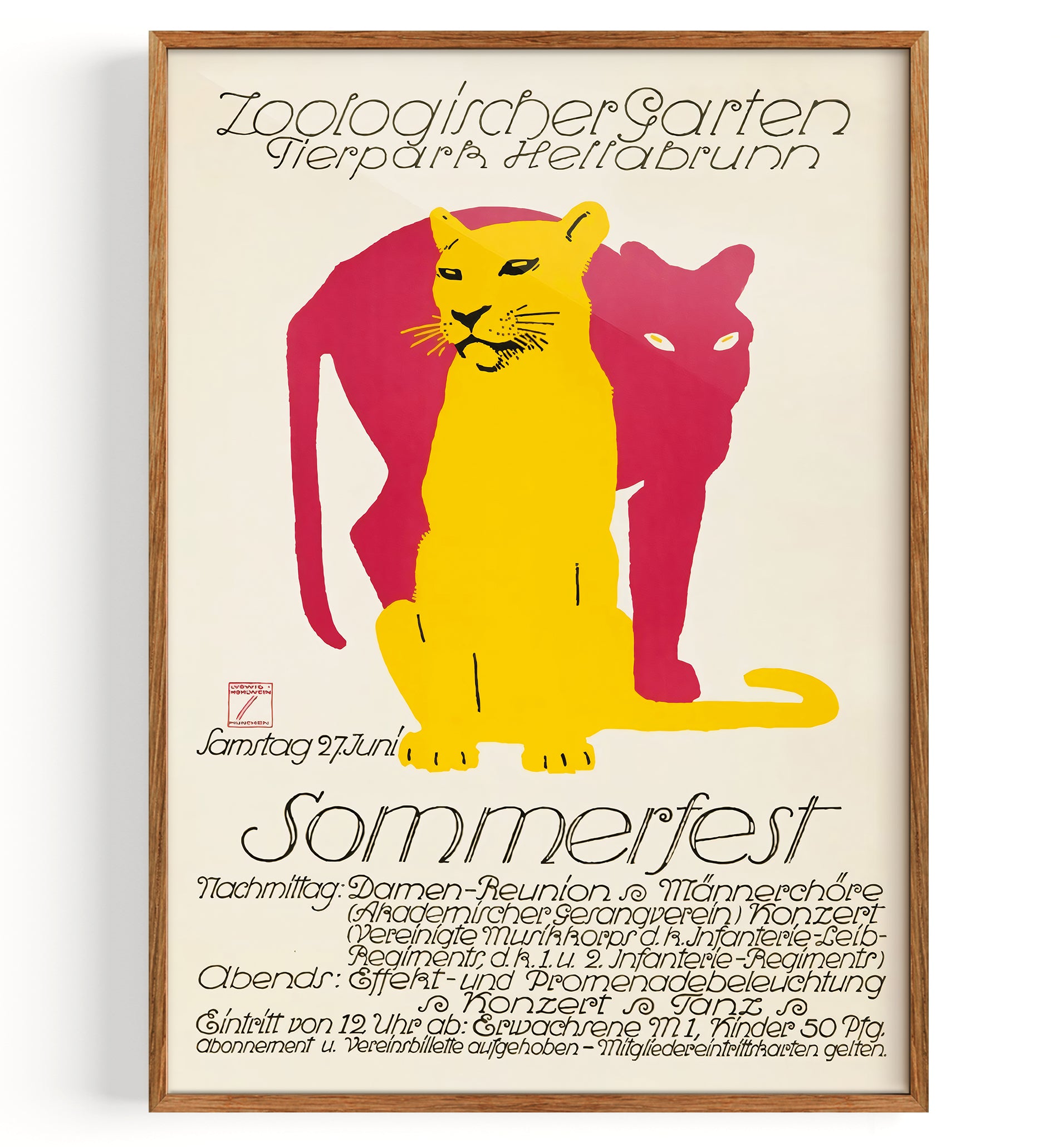 Zoological Garden Summer Festival Poster (1914)
Zoological Garden Summer Festival Poster (1914)Zoological Garden Summer Festival Poster (1914)
Ludwig Hohlwein
Regular price 19,00€+Unit price per Zoological Garden poster (1912)
Zoological Garden poster (1912)Zoological Garden poster (1912)
Ludwig Hohlwein
Regular price 19,00€+Unit price per Roberin advertising poster (1926)
Roberin advertising poster (1926)Roberin advertising poster (1926)
Ludwig Hohlwein
Regular price 19,00€+Unit price per

Ludwig Hohlwein
Ludwig Hohlwein was born on July 26, 1874 in Wiesbaden, Germany, and became one of the most prominent and influential poster artists of the early 20th century. Originally trained as an architect, he turned to graphics and poster art after moving to Munich, a cultural center that significantly shaped his artistic career. Hohlwein's style is distinctive and is characterized by a strong use of color, clean lines and the ability to achieve maximum impact with few details. His work includes advertising, posters for events, fashion and tourism, and illustrations for magazines.
Throughout his career, Hohlwein has worked for a variety of clients including commercial brands, cultural institutions and even political campaigns, demonstrating his versatility and adaptability as an artist. His work reflects the aesthetics and zeitgeist of the 1920s and 1930s, a time of great social and cultural changes in Germany and Europe. Hohlwein's contribution to poster art and graphic design was so significant that he is often referred to as the "German Mucha", in reference to the famous Czech Art Nouveau artist Alphonse Mucha.
Interesting fact:
Ludwig Hohlwein had a particular preference for depicting animals in his works. His ability to depict animals with an almost photorealistic accuracy and at the same time in a stylized manner set him apart from his contemporaries. This passion led to him often being hired as an illustrator for hunting magazines and for advertising for animal feed companies. His depictions of dogs, horses and wild animals remain iconic today and demonstrate his deep connection and understanding of the animal world.Important works of art & pictures by Ludwig Hohlwein:
1. “Munich Child” (1906)2. "Lufthansa" (1918)
3. "Pandora's Box" (1904)
4. "Palace Hotel" (1912)
5. "Circus Busch" (1920)
6. “Hagelberger Hops” (1910)
7. "Manoli" (1914)
8. “Deutscher Werkbund” (1914)
9. “Munich Olympic Games” (1936)
10. "Faber-Castell" (1905)










